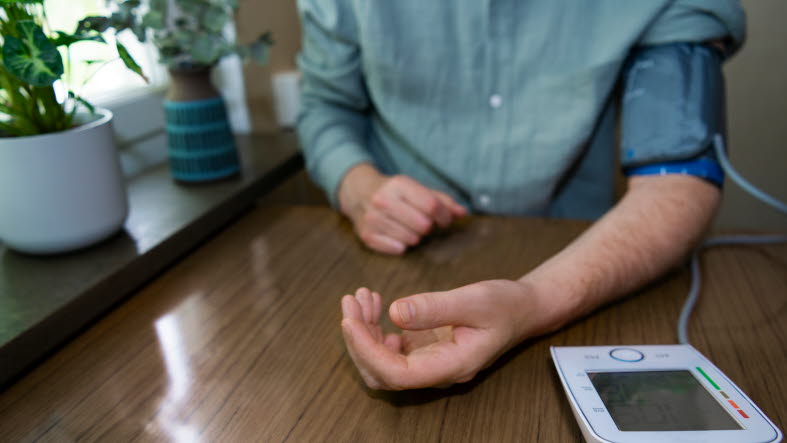The idea behind the initiative from Region Uppsala is to find risk conditions such as high blood pressure and prevent serious complications such as stroke, heart attack, heart failure and impaired blood circulation.
“The hope is, first and foremost, that screening as a preventive measure will reduce suffering in the population due to serious cardiovascular diseases. In addition, we expect that lower morbidity will reduce the burden on healthcare and save money for society,” says Johan Sundström, a cardiologist at Uppsala University Hospital and professor of epidemiology at Uppsala University.
Johan Sundström and vascular surgeon Professor Anders Wanhainen are leading the study.
Self-screening at home
People living in Uppsala County who turn 50, 55, 60, 65, 70 or 75 years old will be randomly assigned to an offer of self-screening. Those who accept will receive a blood pressure monitor, sampling equipment, and instructions on measuring blood pressure and sampling (a prick in the finger) so they can carry out the examinations at home. Those with a risk condition will be called to contact the U-SCREEN clinic at Uppsala University Hospital, and those needing treatment will be offered it. Participation in the self-screening is entirely voluntary.
“We have chosen these groups because the effect of finding and treating risk conditions is estimated to be greatest in these age groups. When we discover that a participant has values considered at increased risk, the person will be offered support. Drug treatment may be needed if the values are greatly elevated,” explains Johan Sundström.
Innovative financing model
SEB, Region Uppsala, and the insurance company Skandia have developed an innovative health impact bond to enable this preventive effort. Skandia is investing the estimated 80 million Swedish kronor cost of the project.
The study’s outcome, which will last until 2028, will determine Skandia’s return on the investment.
“If the effort is successful – that is, if we succeed in initiating more treatments than we have calculated and thus avoid both human suffering and costs as a result of cardiovascular diseases – Skandia will get the money back with an interest rate that exceeds the normal rate in the market, and vice versa” says Angelica Sorio Wiklund, Head of Finance and Accounting at Region Uppsala.
Thus, the parties have found a balanced risk-sharing model that both are satisfied with. Without that model, the study and test would probably never have happened.
“We have calculated that if the outcome is good, there will be one less ambulance per week to Region Uppsala’s hospital over ten years. This is a significant saving,” says Mats Olausson, Senior Sustainability Advisor at SEB.
The current health impact bond with Region Uppsala is the second that SEB has worked on. The first was launched in 2020 with Region Stockholm and Skandia – that project concerns type 2 diabetes.
Health Impact Bond Fact sheet: Description of the initiative (pdf)
Health impact bond questions and answers (pdf)

